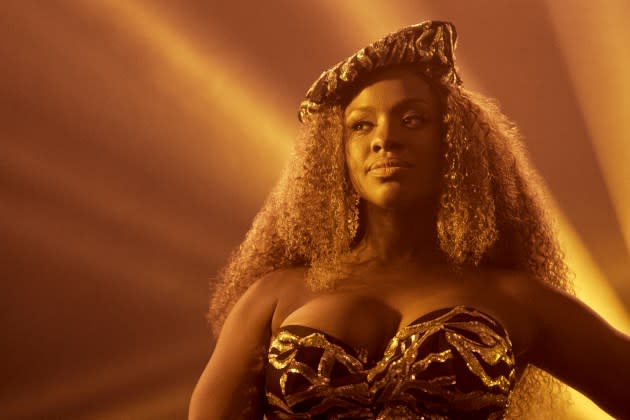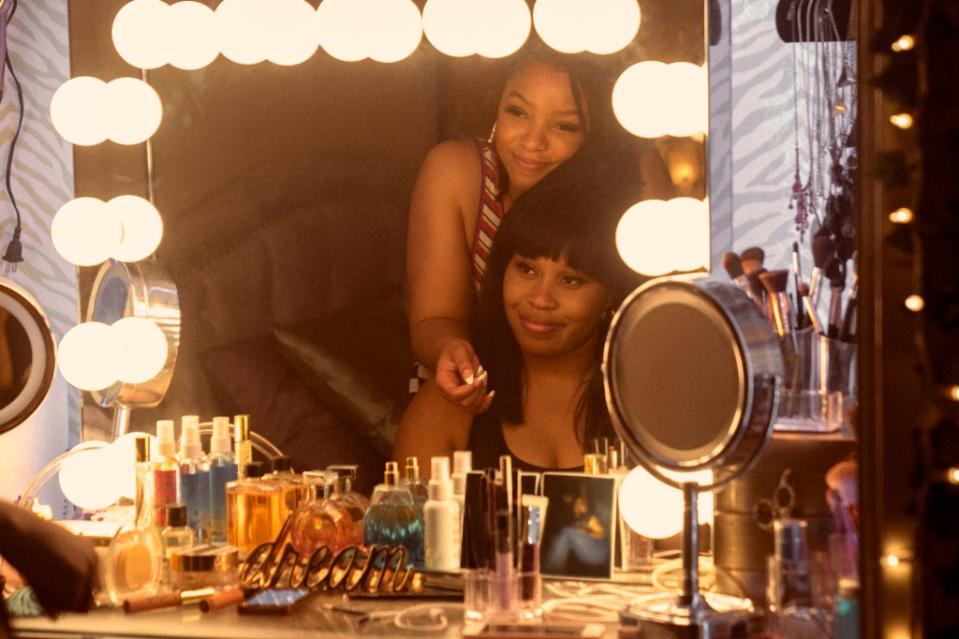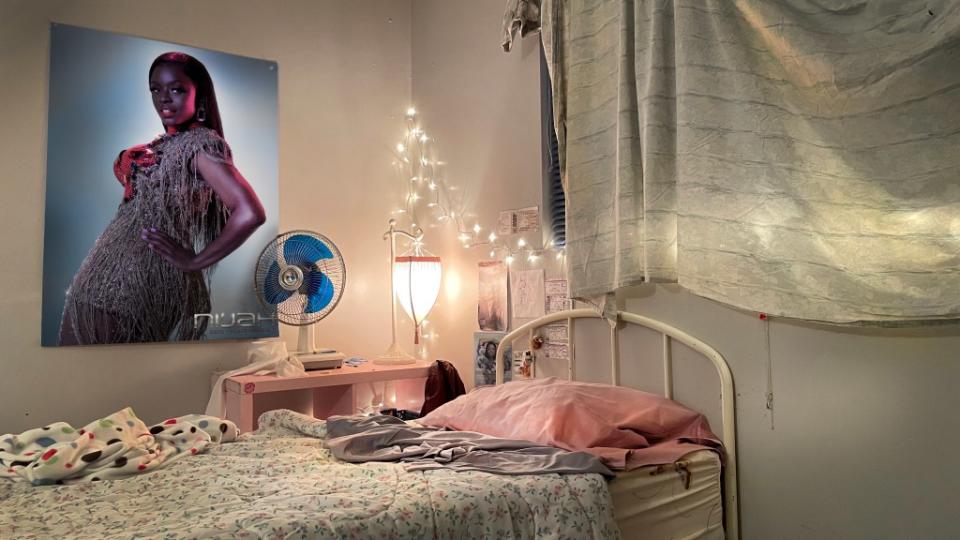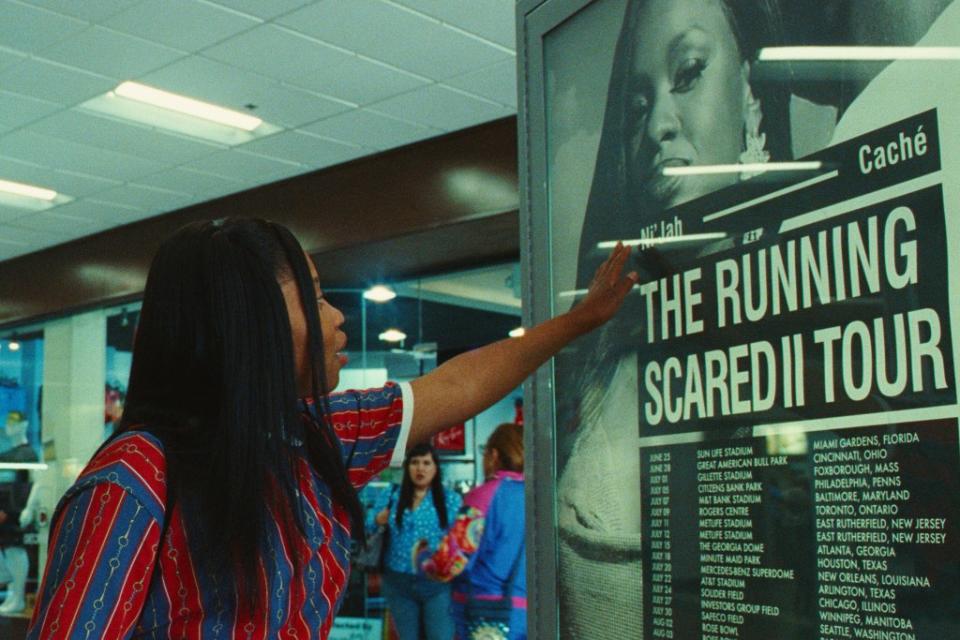How ‘Swarm’ Was Able to Create Beyoncé-Level Merch and Concerts at a Budget Price
- Oops!Something went wrong.Please try again later.
- Oops!Something went wrong.Please try again later.

In Donald Glover and Janine Nabers’ “Swarm,” a highly-detailed dedication to all-things Beyoncé and her “Bey Hive” fanbase is key to the show’s menacingly satirical look at obsessive fandom turned murderous.
Credit “Swarm” production designer Sara K White with taking its creators’ ideal of singing sensation Ni’Jah (Nirine S. Brown) to nuanced extremes, while folding “The Swarm” and its greatest devotee Dre (Dominique Fishback) into Glover’s dreamlike “Atlanta” universe.
More from Variety
'One Piece' Showrunner Breaks Down Biggest Changes Made From Manga That Will Be 'Debated Endlessly'
'One Piece' Showrunner Teases That Smoking Mid-Credits Scene Character and Season 2 Plans
“I knew ‘Swarm’ was a sister to ‘Atlanta,’” said White of Glover’s beloved FX series. “What I wanted to evoke, then, was their shared interest in authenticity and irreverence to the point of whimsy.”
To heighten these qualities within Dre’s hardcore obsessions, “Ni’Jah and food”, production designer White — with set decorator Laura Wallgren, costume designer Dominique Dawson and cinematographer Drew Daniels — had to make Ni’Jah’s world palpable.
“I was given the first episode in December 2021, developed a look-book, was drawn to Dre and seeing the world through her lens,” White said. “With Beyoncé, there was still hope, at that point, we would get clearance to actually involve items that had been developed for her in ‘Swarm.’ Ultimately that didn’t happen, so we worked closely and quickly with graphics, props and legal clearances to make sure we were respectfully evoking the visual language developed throughout Beyoncé’s career and each era in her artistic development.”
Crucial to Dre’s obsession was building a visual history between her and Ni’Jah, from the singer’s earliest days in a Destiny’s Child-like girl group to the present. “We were always interested in the fullness of Beyoncé’s stylistic journey, and envisioned what Ni’Jah would have – from the visual language of the ’90s to ‘Swarm’s’ finale,” White noted.
“That includes the time when Beyoncé’s mom was the fashion designer for her group. We developed ’90s-era graphics for Ni’Jah that complimented that clothing, a fun spirit of brighter, poppier and hotter colors. We moved from bold colors into something where Ni’Jah became socially aware and responsive to the headier elements of shifting culture, of being a world star – a muted palate, a deeper, thoughtful look.”
Going into Bey-like photo shoots for posters, tour signage and record sleeves for Ni’Jah, the first thing audiences witness in Episode 1 (“Stung”) is a “visual album drop” for “Festival,” a package evocative of branded-Bey products such as 2016’s multimedia “Lemonade” and her accompanying Formation World Tour.
“We wanted to speak to an investigation into heritage, and the elements we focused on for ‘Festival’ came from the traditional costuming of Zangbeto spirit dancers traditional to West Africa that Beyoncé used,” White said. “We brought that into Ni’Jah’s costumes and worked off that to create posters and photographs developed for promotion.”

Two “Swarm” scenes display the full range of connections between Beyoncé and Ni’Jah.
The first is during Episode 2 (“Taste”) and the record release party of Ni’Jah’s husband, Cachet, where Dre enters and approaches Ni’Jah, but becomes overwhelmed with the splendor of the moment, bites Ni’Jah and flees. Playing on the relationship between Beyoncé and Jay-Z, White relied upon the rapper’s album font styling and signage on everything from crew jackets to VIP badges.
“We researched high-ticket, after-show parties through photos that spoke to that class level and the splashing out of money on something grand – a sumptuous palate of golds and ivories with black and white as their counterbalance,” she said. “We also brought in Dre’s quirky relationship to food, creating a gorgeous buffet experience that allowed Dre to become… zombified… by the two biggest elements in her life, and snacking on Ni’Jah.”

The second scene comes in the “Swarm” finale, Episode 7’s “Only God Makes Happy Endings,” at a Ni’Jah concert where Dre storms the stage, then walks into the sunset with the object of her obsession. “We referenced ‘Formation’ concerts, and found a great series of photographs by Andrew White that covered that tour’s creation,” White said. “We didn’t have ‘Formation World Tour’ budgets, and created large-scale screen and light panel elements evocative of ‘Formation,’ along with adding cost-effective texture elements like open scaffolding on the surround that gave us perfect light and shadow, then worked with our choreographer to allow our staging to fit their dance.”
By the concert’s close on a staircase prepped for this scene, Dre is portrayed as “dissociated from reality” as she interacts with a character that is “a mash-up of the most important people in her life, Ni’Jah and Marissa” (the latter played by Chlöe Bailey) in an ominously religious final pose.
Whether looking at reverence or obsession to Beyoncé-esque accuracy, White states that, with “Swarm,” everything was done with gratitude and respect. “We wanted to do right by Beyoncé and her fans,” she said.

Best of Variety
Oscars Predictions: Best Actor - There Will Be Blood in the Lead Actor Race
Oscars Predictions: Supporting Actress - Da'Vine Joy Randolph and Jodie Foster Enter the Awards Race
Sign up for Variety’s Newsletter. For the latest news, follow us on Facebook, Twitter, and Instagram.

